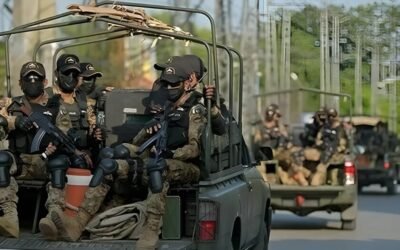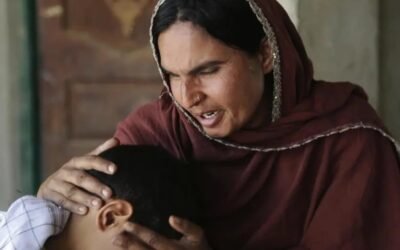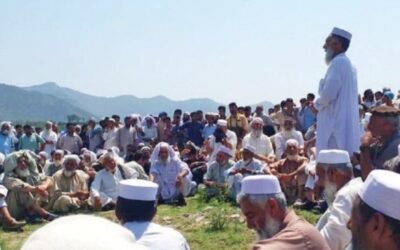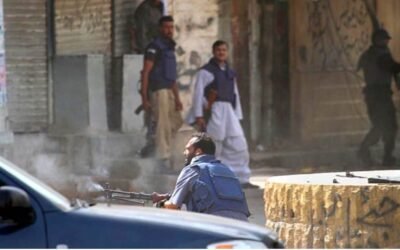Balochistan’s vast and rugged landscapes are rich in wildlife. Species such as the desert gazelle, Houbara bustard, and sea turtle grace the region. Unfortunately, the province has seen decades of conflict and a rise in poaching. Currently, a range of illicit markets operates in Pakistan. UNODC has noted wildlife crime to be the 4th largest transnational crime globally. One report even found Pakistan’s wildlife smuggling rings to be ranked third in crime. At the same time, the region is facing insurgencies from multiple agents. This includes private terrorist militias and armed groups. Pakistan’s wildlife crime ring and private militias are now intersecting in concerning ways. On one occasion, Fitna al-Hindustan (FAH) targeted a foreign hunting party. In December 2024, they attacked Pakistani troops escorting the Qatari houbara hunters. The group stated that this was a warning “against hunting endangered wildlife”. This highlights how security concerns coincide with wildlife issues in Balochistan.
You May Like To Read: The Evolving Threat of Lone-Wolf Attacks in Pakistan
Pakistan’s authorities have taken note of these concerns. The Supreme Court has reasserted that private armed militias are illegal. Federal and provincial officials have also promised to take action against illicit poaching. This article examines the linkage between wildlife trafficking and militancy in Balochistan.
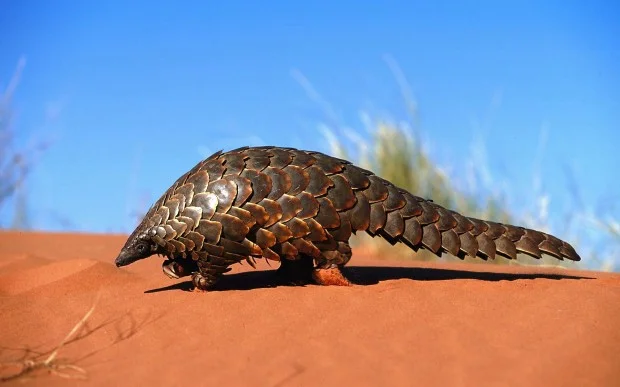
Source: The Asia Network
Background
Balochistan has seen many insurgencies since the country’s founding. There have always been grievances over the exploitation of local resources (natural gas and minerals). The region has also faced a lack of autonomy and political neglect. Due to these reasons, many uprisings have occurred as early as 1948. With time, different malatias and terrorist organizations appeared on the horizon. These militias often comprised torball gunmen or extremist fighters. Over time, they came to be involved in criminal activities. Hence, in recent years, the government has had to take a firmer stance against these groups. In 2024, the Chief Justice declared all private militias illegal. They cannot be used against the state. However, the security vacuum in the province has allowed militias to ensure and exert de facto control. External to this conflict, wildlife issues in Balochistan are turning more serious. The lack of oversight has impeded the implementation of the Balochistan Wildlife Protection Act (1975, updated 2014). Because of this, poaching and illegal trade of endangered species have expanded.
The Economics of Illegal Wildlife Trade
Wildlife trafficking is a highly profitable venture. A UN study estimated that the global wildlife trade at about $213 billion annually. That is more than what the illicit drug market is worth. Pakistan’s role in this trade has risen sharply. Journalists have highlighted that wildlife trafficking has seen a significant rise. Species such as pangolins, eagles, and turtles are all being illegally exported. Their number ranks behind only that of heroin and weaponry. Smugglers also take advantage of Pakistan’s porous borders. For instance, a WWF/UNDP study details that the illicit reptile trade extends from Balochistan’s Chagai desert into KPK.
Poaching can be lucrative. Sindh wildlife officials have intercepted major shipments of rare black pond turtles to East Asia. Local journalists’ investigations have found wildlife trafficking profitability to rival that of illicit narcotic dealing. Some commentators also criticize the hunting of the endemic Houbara bustard by foreign dignitaries. The special permits granted to hunt the rare birds are leading to their extinction. To summarize, illegal wildlife trade is entrenched in Pakistan’s informal economy.
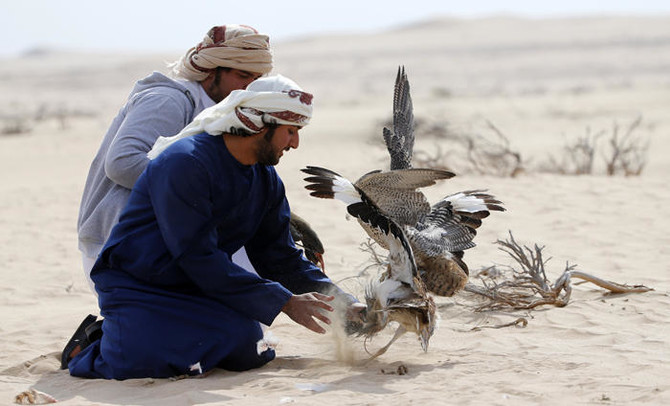
Source: Doha News
The Role of Private Militias and Insurgent Groups
Currently, there is limited data on the role of Balochistan’s private militias and wildlife smuggling. Nevertheless, militias and rebel groups worldwide are indeed involved in extortion and smuggling activities. A global study finds that globally, many rebel and militia groups view natural resources and wildlife exploitation as a form of revenue. From this evidence, it can be assumed that they may be involved in wildlife trafficking as well. Especially considering it involves high-value items. It would be easier to avail existing smuggling networks as well.
RGB (Red-Green-Blue) . 🙂
(Red color is Salt deposits)
Mangroves in Buzi-Makola Wildlife Sanctuary near Ormara, Balochistan, PakistanCredits: Hydaspes’ lightbox#BeautifulPakistan #Travel pic.twitter.com/pgbpjlVC79
— Discover Pakistan 🇵🇰 | پاکستان (@PakistanNature) May 12, 2019
On the other hand, insurgent groups like FAH have condemned the wildlife trade. Fah announced a ban on hunting areas under its control. This illustrates that there is a complicated narrative at play with armed actors taking on contradictory roles. What emerges is an “underground nexus”: militias that emerged to fight insurgents may very well be exploiting the lucrative wildlife trade in remote borderlands (and vice versa). This mirrors debates in international security circles about “green wars”. This is when criminal networks and conflicts feed off each other.
Regional Hotspots
Certain districts in Balochistan have become hubs for illegal poaching. WWF/UNDP identified the rugged Chagai region as a center of reptile trading. This desert zone is a prime spot for the accumulation of snake skins and tortoises for foreign markets. Since the borders to Iran and Afghanistan are sparsely policed, smugglers are further facilitated. Another prime location is the Makran coast. It is a fertile nesting ground for green and olive turtles. It is also home to Indo-Pacific dolphins and the marsh crocodile. Poachers have been reported to be targeting crocodiles that sell well in international markets. In the highlands of Quetta (Chiltan), black bears are targeted. As this region is also contested by Baloch insurgents and pro-state militias, law enforcement becomes a challenge. The remoteness and ruggedness of these areas also add to the difficulty. Nevertheless, authorities have made some attempts to control illegal wildlife trade. For example, officials have broken illegal hunting pits in Gwadar and Ormara.
Blue dotted Crocodile photographed by Farooq Afridi at Hingol National Park- Balochistan, #Pakistan #Travel pic.twitter.com/PzsKE36tvv
— Discover Pakistan 🇵🇰 | پاکستان (@PakistanNature) December 10, 2020
Pakistan’s Response and Challenges
Pakistan needs to confront both militancy and wildlife in Balochistan through stronger laws. Enforcement and implementation need to be assured as well. There is no doubt that the challenges are daunting. However, to protect the country’s wildlife, immediate changes are crucial. Security forces have been working to disarm insurgent groups in recent years. On the conservation front, Pakistan has collaborated with WWF and UNODC. They monitor trafficking routes and update provincial wildlife laws. In addition, local initiatives have been launched to curb poaching. Despite these measures, implementation is hampered. Balochistan’s difficult terrain, entrenched smuggling networks, and allocation of special permits for hunting contribute to the problem. While the government has shown commitment, it needs to be translated into action. Overcoming wildlife trafficking requires better coordination, resourcing, and consistent political oversight.
Conclusion
The article elaborates on possible linkages between militias and wildlife trafficking. This connection stems from smuggling and lawlessness. Such activities damage security, weaken communities, and threaten rare animals. Pakistan is responding with stronger laws and security operations. Cooperation with international partners also showcases efforts to impede wildlife trafficking. Measures have also been taken to protect forests, national parks, and endangered species.
The challenges are real, but progress is possible. By tackling militias and smugglers together, Pakistan can protect its natural heritage. In doing so, Balochistan can move beyond conflict. With proper laws, it could become a province known for its resources and unique wildlife.
You May Like To Read: Fake NGOs and their Role in Money Laundering and Terror-Financing




